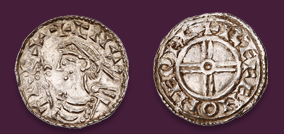
Auction: 24113 - Orders, Decorations and Medals - e-Auction
Lot: 508
(x) An emotive Great War and Second World War campaign group of nine awarded to Signaller E. Tuffs, Royal Navy, who saw action off Turkey and in the Black Sea in 1920-21 before coming ashore to serve in the police
Recalled from the Royal Fleet Reserve in August 1939, he joined Tamar in Hong Kong and was taken Prisoner of War on the fall of the colony in December 1941. Subsequently embarked in the 'hell ship' Lisbon Maru in September 1942, he was lucky indeed to survive her loss to a torpedo strike delivered by the U.S. submarine Grouper
So, too, his subsequent internment in Hakodate camp in Japan, from which he was finally liberated - but 'unable to walk' - in September 1945
British War and Victory Medals (J.69264 E. Tuffs. Sig. Boy. R.N.); 1939-45 Star; Pacific Star; Defence and War Medals 1939-45, all engraved (J.69264 E. Tuffs. Sig. R.N.); Coronation 1953, engraved (Const. Edward Tuffs); Royal Fleet Reserve L.S. & G.C., G.VI.R. (J.69264 (CH B. 20028) E. Tuffs. Sig. R.F.R.); Police L.S. & G.C., G.VI.R. (Const. Edward Tuffs), overall good very fine (9)
Edward Tuffs was born in St. Pancras, London on 28 June 1901 and entered the Royal Navy as a Boy 2nd Class in March 1917. Rated as Boy Signaller on joining his first seagoing appointment in the battleship Ramillies in March 1918 - and excepting a short interlude ashore in May-July 1919 - he was to remain employed in Ramillies until August 1922, latterly as a fully qualified Signaller.
In that period he witnesses extensive action off Turkey and in the Black Sea, where Ramillies and her consorts Royal Oak and Royal Sovereign landed Royal Marines and bluejackets to assist at the British occupation of Constantinople in March 1920. Then in mid-June, Ramillies and Revenge bombarded Turkish nationalist troops advancing on Ismid, the former expending 46 15-inch shells and 657 6-inch shells, prior to landing a further party of Royal Marines to assist at the defence of the city. Ramillies also boarded the enemy battle cruiser Yavuz Sultan Selim and covered the landings in eastern Thrace.
Tuffs went on to hold several more seagoing appointments in the period leading up to March 1927, when he purchased his discharge and enrolled in the Royal Fleet Reserve. Here, then, likely the moment he decided on a career as a policeman, and it is worth speculating whether that ambition took him to Hong Kong. For in August 1939, he was recalled from the R.F.R. and drafted to Tamar, the colony's naval base.
Loss of the 'Lisbon Maru'
Be that as it may, we do know from official records that he was taken P.O.W. on the fall of Hong Kong in December 1941 and among those chosen for transportation in a 'hell ship' to Japan in September 1942. And that 'hell ship' was the Lisbon Maru.
The Lisbon Maru sailed from Hong Kong on 27 September 1942, bound for Shanghai and labour camps on the Japanese coast. She was armed, and carried 1,816 British prisoners of war, 778 Japanese troops and a further guard of 25 men for the prisoners. There was nothing that identified her cargo as prisoners of war.
379 Royal Navy personnel were accommodated in No. 1 Hold at the front of the ship. A further 1,077 troops were crammed into No. 2 Hold, forward of the bridge, including the Senior British Officer on board, Lieutenant-Colonel H. W. M. Stewart, Commanding Officer of the 1st Battalion, Middlesex Regiment, whilst 380 men of the Royal Artillery were placed in the stern. Conditions were appalling, made worse by a lack of sanitation and the sea conditions. At the base of No. 2 Hold, Dennis Morley, a 22-year-old Private in the Royal Scots Regiment, later recalled being 'showered by the diarrhoea of sick soldiers above him … swimming in excreta, virtually.'
On 1 October 1942, the American submarine Grouper fired six torpedoes at the Lisbon Maru off Dongfushan in the Zhoushan Archipelago, to the south of Shanghai. Five of the unreliable Mark 14 'fish' either passed under the target or failed to detonate, but one exploded against the stern bringing the ship to a standstill. Grouper immediately came under retaliatory attack from enemy patrol boats and aircraft and departed the scene, enabling the Japanese troops aboard the Lisbon Maru to be taken off the stricken vessel. As they departed, they battened down the hatches, leaving their prisoners standing in the dark and running short of air to breathe.
Throughout the following night the prisoners remained trapped in the holds. Messages in morse code were rapped on the bulkheads between them, and gradually the stern began to fill with water. Something urgently needed to be done to prevent the men drowning or dying of asphyxiation. As the sun began to rise on the morning of 2 October 1942, the men felt the hull give 'a sudden drunken lurch', and a frantic escape effort began. Morley describes the scenes that he witnessed:
'Well, one chap, he was in the Middlesex Regiment, he was a butcher and the Japanese allowed him this knife, which he was able to put through the planks. He got through to the canvas, eventually - the whole lot. The canvas could be lifted out of the way and the planks moved which is how we got out.
A bit of panic started because everyone was trying to rush up to this ladder and everybody was fighting to get onto this ladder. Consequently, you're getting so far up and falling down into the bottom of this hold - until this officer, Captain Cuthbertson of the Royal Scots, stopped the panic and got them to quieten down.'
This account is challenged by another which states that Lieutenant Howell managed to cut his way out of the hold using a bread knife smuggled aboard ship, but whatever the case, the first P.O.W.s to reach the deck were fired at by a few remaining Japanese guards who were quickly dispatched. Then the British began to slide off the side of the ship into the water in an attempt to get away from the vessel, but they were targeted by machine-guns from the Japanese who were watching on.
It was only when Chinese fishermen started coming to the aid of the soldiers and sailors in the water that the firing ceased and the Japanese began to gather them up as well. At the stern of the ship, men of the Royal Artillery continued to hoist themselves up a ladder which eventually broke; in one of the most harrowing scenes of the tragedy, the survivors in the water listened with horror as dozens of trapped men of the Royal Artillery went down with the ship singing 'It's a long way to Tipperary'.
In total, 828 Prisoners of War died either aboard ship or in the waters around the vessel (The Sinking of the Lisbon Maru, Britain's Forgotten Wartime Tragedy, refers). Especially tragic was the fact that the ship had been sunk by an American submarine, whose crew were completely unaware that there were Allies aboard until they picked up a radio signal several days later. Of the survivors, only 748 returned to the U.K. alive following the cessation of hostilities.
Having survived the loss of the Lisbon Maru, Tuffs and his fellow captives endured further trials.
Thirty-five of the prisoners who were seriously ill were left in Shanghai and the remainder were then loaded in the holds of a Japanese transport, the Shensei Maru, in conditions similar to those on the Lisbon Maru. Dysentery and diphtheria were now rife and the men in poor shape, five of them dying on the journey to Japan. The ship docked at Moji on 10 October, where 36 of the worst cases of dysentery were removed to hospital. The remaining prisoners were directed into two groups, the larger, consisting of about 500 men, destined for Kobe, and the remainder for Osaka.
The exact nature of Tuffs' subsequent movements is a matter for speculation, but we do know that when he was finally liberated from Hakodate camp on 2 September 1945, he was among those listed as 'unable to walk'. Having received medical treatment, he was embarked for the U.K. where, at length, he picked up his police career, apparently as a P.C. in the 'Met'. He died in Camden, London in June 1983.
Subject to 5% tax on Hammer Price in addition to 20% VAT on Buyer’s Premium.
Sold for
£580
Starting price
£140




